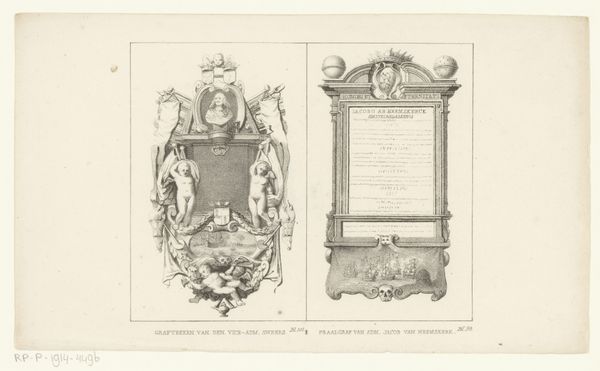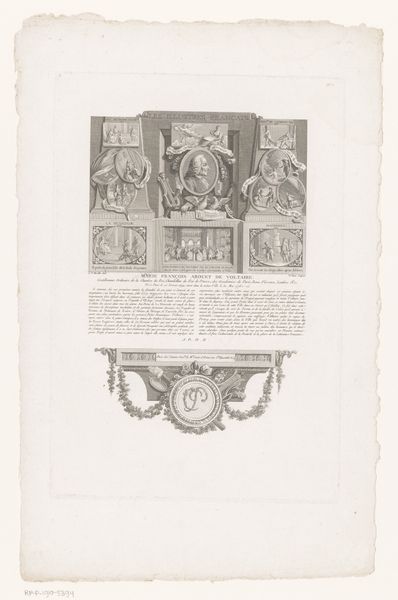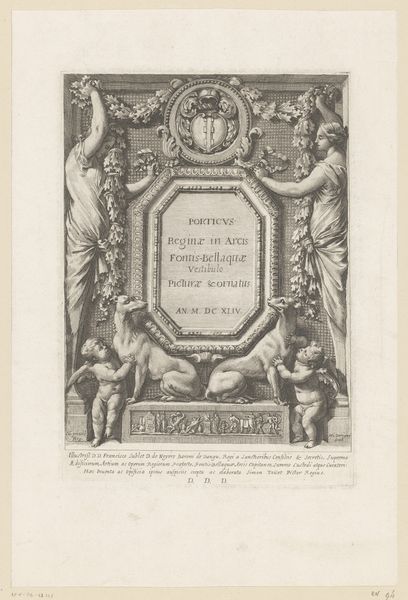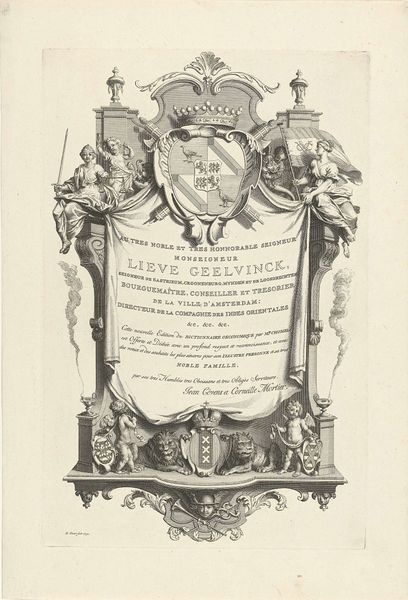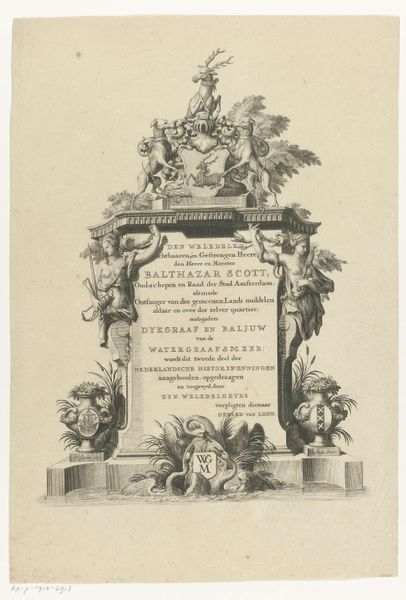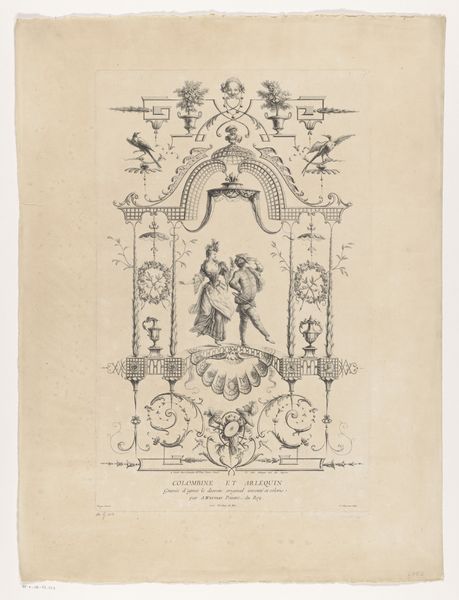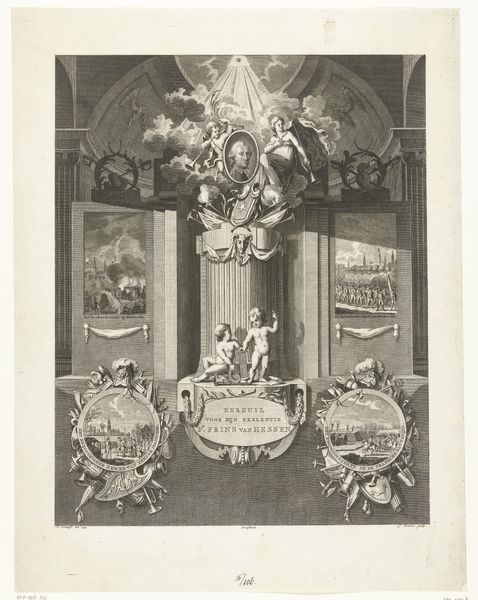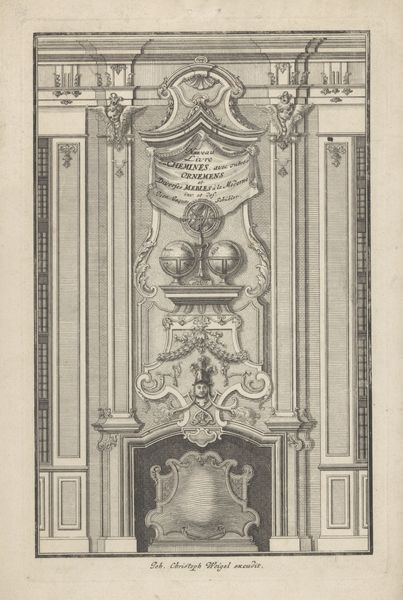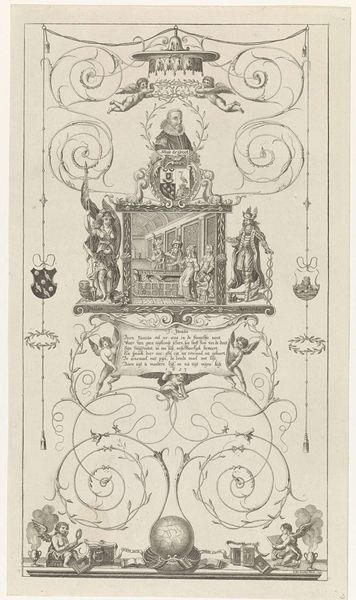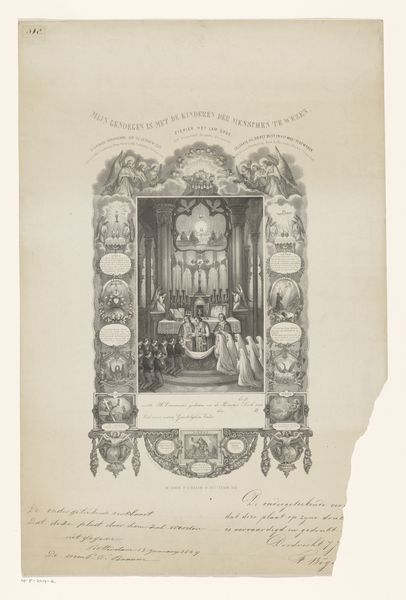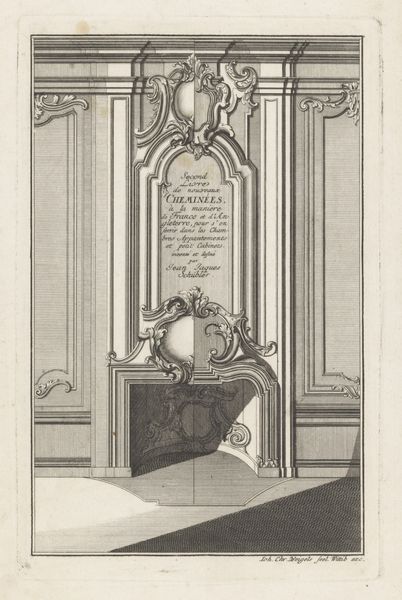
Grafmonument van Duco Martena vna Burmania en zijn vrouw 1871 - 1875
0:00
0:00
Dimensions: height 357 mm, width 265 mm
Copyright: Rijks Museum: Open Domain
Curator: It has such a melancholic atmosphere. Almost gothic. Do you agree? Editor: That’s a fitting response. What we have here is an engraving, titled “Grafmonument van Duco Martena vna Burmania en zijn vrouw,” dating from 1871-1875. It's currently held at the Rijksmuseum. It appears to be after an older design. The artist is Andries van Calfsbeek, according to our records. Curator: The old engraving style makes it appear much older. The skulls definitely contribute to that gothic feeling. Skulls and crossed bones seem a little bit heavy handed perhaps? Editor: In the context of the time period in question, it serves a stark reminder of mortality and the weight of familial legacy. Notice how it portrays a detailed tomb monument; you can almost see it in three dimensions. Think about how families memorialized themselves through these sorts of works. The text included celebrates lineage. Curator: And those heraldic shields on either side. They speak volumes, don’t they? They present this narrative of family history and power structures that defined individuals' places within society. I think the cherubs up top, while conventional for these types of memorial pieces, seem a bit at odds with the skulls at the bottom. Editor: An interesting juxtaposition! Perhaps speaking to different levels of existence, one more earthly, the other more divine. Do you think it effectively represents the weight and social currency that family name held during that period? Is it more than just pretty heraldry? Curator: Absolutely, I think that the choice of engraving—reproducing or imitating older designs, perhaps—suggests an intention to imbue the Martena and Burmania families with the gravitas and respectability conferred by history. The style recalls, possibly intentionally, the Mannerist style, another nod to their prominent past. Editor: Seeing this from a 21st-century perspective makes one wonder how individuals navigate their identities today, in contrast to when legacy and lineage were more pronounced determinants. How much choice do we have now? Curator: That’s an important reflection. Perhaps this work is then an interesting intersection between then and now, and where, in that equation, we are all positioned in the twenty first century. Editor: Indeed. It prompts important discussions about remembrance, legacy, and social identity.
Comments
No comments
Be the first to comment and join the conversation on the ultimate creative platform.
